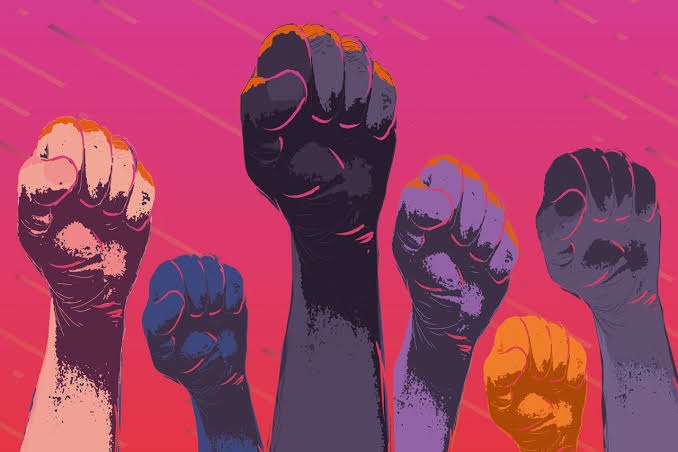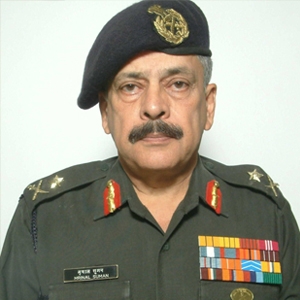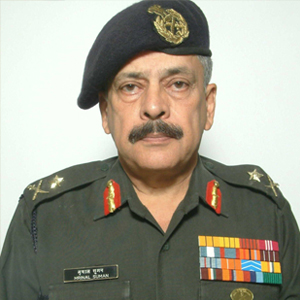Activism: A Lucrative and Potent Occupation
Sweden’s Greta Thunberg is world’s leading environmental activist. In August 2018, at the age of 15, she skipped school and protested outside the Swedish parliament for more action against climate change. She attracted media attention and soon acquired a considerable following in several countries. In February 2021, Thunberg tweeted in support of the farmers’ agitation in India. All were surprised as the said agitation had nothing to do with climate change.

Choice of profession has always been a crucial decision for the youth. Medical, engineering, military, business management and IT are the preferred professions of the diligent and the intelligent.
For the ingenious and wily upstarts, Babugiri, Babagiri and Netagiri have always been the most remunerative careers. If a youngster manages to pass a few papers (of any subject) of the civil services examination, he gets the dream job of a bureaucrat (Babu) with power, prestige, privileges and wealth. For those who are not good in studies, playing god-man (Baba) is the ideal profession. Dressed appropriately with flowing robes and garlands, they address public gatherings with half-closed eyes and soon acquire huge following and large ashrams.
Finally, if a youngster is good-for-nothing, keeps company with hoodlums and remains on the wrong side of the law, he is ideally suited to be a political leader (Neta). Rise is rapid and even a tenth-failed person can aspire to be a Minister. Wealth pours in a torrent.
Emergence of Activism as a Lucrative Profession Of late, all the above mentioned careers have been overshadowed by the emerging profession of activism. Activism, in common parlance, means being passionate, enthused, feisty and keyed-up about an issue or cause. It gets translated into an aggressive and intense support to campaign for change; and the change could be related to political, social, environmental or other public issues.
Activists attempt to promote, impede, direct or intervene in the issues of common interest to initiate reforms for perceived betterment. Activism becomes a highly visible and effective movement when a large number of activists join the campaign.
In pursuit of their goals, activists employ multiple methods/tactics – demonstrations, protest marches, rallies, boycotts, strikes, petitions, court-interventions and media crusades. Of late, social media has emerged as the most potent tool of activism. Activists have realised the enormous reach and power of the popular social media apps.
It is a well-known fact that most activists are available for a price. They are ready to support any cause, even if they are totally ignorant of the issues involved, provided they are paid their charges. Activism has thus been converted into a profitable business.
Sweden’s Greta Thunberg is world’s leading environmental activist. In August 2018, at the age of 15, she skipped school and protested outside the Swedish parliament for more action against climate change. She attracted media attention and soon acquired a considerable following in several countries. In February 2021, Thunberg tweeted in support of the farmers’ agitation in India. All were surprised as the said agitation had nothing to do with climate change.
However, Thunberg let the cat out of the bag the very next day, when she inadvertently shared ‘a toolkit for those who want to help’. The toolkit document listed various actions, including creating a ‘Twitter Storm’ and protesting outside Indian embassies, to support the farmers' protest. Allegedly, Thunberg had been paid a huge sum for her tweet. No wonder that at the age of 20, she has become one of the wealthiest activists in the world with her net worth estimated to be nearly USD 2 million.
Malala Yousafzai has acquired fame as a human rights activist for the rights of women and girls. She won the 2014 Nobel Peace Prize at the age of 17. In February 2022, Malala tweeted on the hijab controversy, “Refusing to let girls go to school in their hijabs is horrifying. Objectification of women persists for wearing less or more. Indian leaders must stop the marginalisation of Muslim women.”
Interestingly, in her book, Malala has proudly claimed that she did not wear a hijab during her school ceremonies, "One day at school, there was a parents’ day and a prize-giving ceremony, I came out in front of all the boys and recited one poem. I wasn’t wearing a veil." Even now she does not wear a hijab. Interestingly, she remained silent when some European countries banned Burqa and Niqab.
Malala’s net worth is estimated at USD 5 million. There is no other occupation in which one can acquire so much in such a short period, and that too without any worthwhile qualifications.
All the celebrities who have considerable following on social media are being courted by the interest-groups to join the band-wagon of activists. Of course, easy money is the prime bait. International pop star Rihanna also jumped into the fray with her tweet on the farmers’ protest. It is alleged that she was paid a hefty sum by some pro-Khalistan Canadian politician. Porn star-turned-model-cum-activist Mia Khalifa also posted tweets on the farmers' protest. Undoubtedly, it was a ‘coordinated campaign’ by some activist groups, as was revealed by the tool-kit.
Activism has evolved into a highly paying and profitable industry. It has become a full-time core business of some groups and organisations. Professional activists have become a handy tool in the hands of rich and influential persons/NGOs to garner support for their subjective agenda. Pay them their dues and they can start campaigning for any cause that you desire.
Many Shades of Activism
Activism has often been thought to address either human rights or environmental concerns. Human rights activism seeks to protect basic rights such as those laid out in the Universal Declaration of Human Rights. Environmental activism advocates protection of natural environment, conservation of natural resources and guard against climate changes.
Activists can be broadly categorised into three distinct groups. One, the ideologues who genuinely believe in the cause that they promote. There are only a handful of them. Two, the silent majority that lends its support when persuaded to show solidarity with campaigns for human rights, women empowerment, justice for all, environment and so on. Finally, the professional activists who can take up any issue as long as the rewards are commensurate. Greta Thunberg, Malala Yousafzai, Rihanna and Mia Khalifa fall in this category.
In many countries, judges employ judicial activism to propagate their own conception of the social good. Economic activism involves using the economic power of government and industry for economic policy change. Consumer activism seeks a fair deal for the consumers and their protection from exploitation.
Political activism is undoubtedly the most common and potent activism. At the conventional level, it aims to influence the government policies. Political activism does not remain confined to ideological issues. It is often used to settle political scores, especially if the political opponent is too strong to be defeated through elections. However, when exploited by unscrupulous elements, it becomes a handy tool to unseat a duly elected government by instigating people through large scale movements.
Lobbying to influence government’s decision-making process is a common form of activism. Many groups, including law firms, have designated staff assigned specifically for lobbying purposes. In addition, many organizations in the activism industry masquerade as non-profit organizations with high-sounding programmes, albeit with a devious and deceitful underlying agenda. Wealthy people also fund such activism in pursuit of their blinkered goals.
Finally
Social media with hashtag activism has empowered activists immensely and boosted their worth. For the celebrity-activists, neither the cause nor the people matter; only cash counts. They do not suffer from any pangs of public morality and scruples. Demonstrating extreme narcissism, they flaunt their following with unconcerned abandon. They can stoop to any level without qualms. Thunberg would be knowing little about India, its location and the issues involved in the farmers’ protest. Yet, she decided to tweet to earn some easy Euros.
Often, there is a thin line separating professional activism and anti-nationalism. In fact, in many cases they overlap. Anti-national activism has two key imperatives. One, it does not exist in innocence but contains malicious intent and ulterior motives, albeit camouflaged under pompous ideological phrases. Two, it is carried out by the perpetrators in full knowledge of the ensuing detrimental impact on national interests.
When politico-social activists question the very concept of nation states and resort to undermining the duly elected governments, they become a tool in the hands of devious pseudo-liberals who carry repugnance for the prevailing system. Their activism creates social disharmony, generates dissentions amongst the people, makes citizens lose confidence in the governing regime and defame the country internationally. Being dreadfully lethal, such activism has the potential of causing severe damage to the soul and body of a nation state. Such activism acquires the form of a seditious subterfuge.
India has a horde of professional activists who are doing a thriving business. They swear by human-rights and secularism, only to revel in shaming the country to please their foreign paymasters. There are advocate-activists who are adept at filing PILs in the courts on any subject under the sun to oppose the government. They excel in pursuing their agenda through judicial interventions. For a hefty fee, they can procure bail even for the hardest criminals and anti-national elements, albeit under the smokescreen of human rights or freedom of speech.
Similarly, there are presstitutes who make millions through paid-journalism. Many social-media activists indulge in spreading negativity in the environment. Their sole pursuit is to search out and propagate any news or article that is critical of the regime, howsoever innocuous or ill-informed it may be. For them, India is a cheerless country with no hope. They see darkness all around and spread pessimism. Some of them appear to be fifth columnists masquerading as progressive activists.
Lastly, if India has to survive and flourish as a nation, anti-national activists have to be dealt with ruthlessly. Freedom of speech cannot be allowed to be misused to pose a threat to the national wellbeing. Anyone promoting hatred between communities through divisive activism must be punished for anti-national activities (or even treason/sedition), as internal dissentions are the start point of all civil strife.

Major General Mrinal Suman


